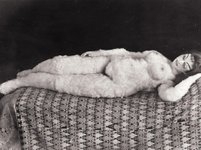Meg Kissack
@megkissack
Meg Kissack
@megkissack

Kurt Vonnegut, talking about when he tells his wife he’s going out to buy an envelope:
“Oh, she says well, you’re not a poor man. You know, why don’t you go online and buy a hundred envelopes and put them in the closet? And so I pretend not to hear her. And go out to get an envelope because I’m going to have a hell of a good time in the process of
... See morebut ultimately Streisand's resolve won out. "I became what I wanted to be ... I don't want somebody telling me what I can't be," she told me.
We feel better: awake, fulfilled, whole. By creating regularly, we access a new source of vitality. Turning an idea in your head into a tangible reality is one of life’s great satisfactions, whether the end result is a story, a photograph, a meal, or a business.
